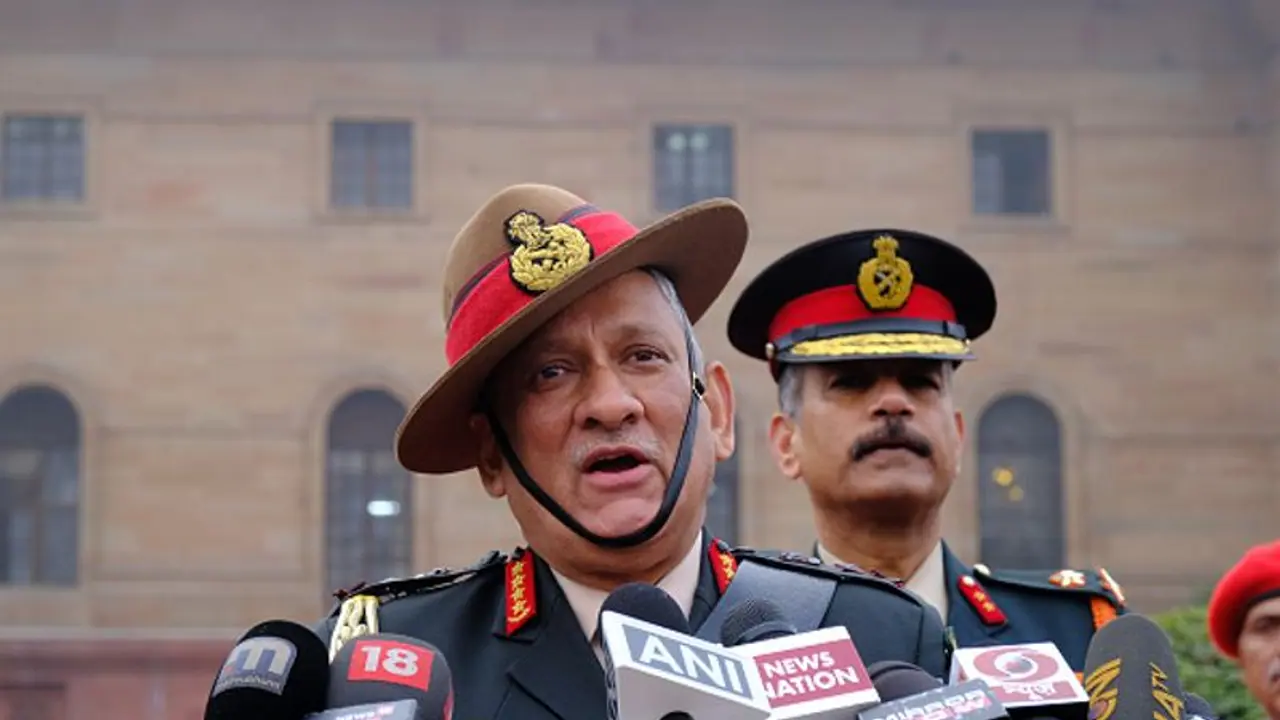Chief of Defence Staff, General Bipin Rawat’s statement of having de-radicalisation camps has garnered a lot of attention. Though a section of media chose to criticise Gen Rawat, we take a look at the need to make such strong efforts to curb terrorism
India’s first Chief of Defence Staff, General Bipin Rawat made a strong statement when he spoke about de-radicalisation camps.
He said that those radicalised can be isolated in a gradual manner. However, there are people who have been completely radicalised, General Rawat said at the Raisina Dialogue 2020.
Following the statement, there was a section of the media which chose to criticise the General. However, if we look at the work that has been undertaken by our agencies in the past four to five years with regard to de-radicalisation, it would be safe to say that had this not been done, not 104, but 1,004 people would have joined the Islamic State from India.
Radicalisation in Kashmir:
The Jamaat-e-Islami in Jammu and Kashmir played a huge role in radicalising the youth of the erstwhile state. The government sent across a very strong message when it banned the JeI.
The ban on the JeI was a clear indication that this government wanted to change the pattern of fighting terror. There is a dire need to fight radicalisation in order to beat terrorism. In Kashmir, it has been witnessed over the years that children in the age groups of 10 and 12 have been radicalised and they have been seen coming out on the streets and pelting stones.
If these children are not de-radicalised, then six years later, they would come out with guns instead of stones. In Kashmir, the problem of radicalisation has been found both online and offline. The government has documented the problem in detail. The basic message that General Rawat sent out is that the one who is radicalised cannot be allowed to get away scot free. They have to be de-radicalised irrespective of age and if this too does not solve the problem then they need to be punished.
Cannot politicise radicalisation:
The problem over the years is that radicalisation has not been debated enough and terrorist violence has been treated as a multi casual event. Acts of terror have been blamed on unemployment, poverty, human rights etc.
This was by and large a very convenient discourse and the issue of radicalisation was avoided by successive governments (Congress) for the fear of wading into politically dangerous territory and appeasement politics.
In today’s world, 90% of the terrorists are either educated or highly educated. The interrogation of these persons has clearly revealed that they have all taken up arms after being radicalised. These are the ideological terrorists and cannot be considered to be the sons of a poor teacher, like what some said in the case of Burhan Wani.
Further the rise of the Al-Qaeda and Islamic State has shown how strongly the theological discourse has been used to radicalise the youth. Hence it becomes extremely important to focus on the concept of radicalisation and also respond to such religious indoctrination. What addressing the concern of de-radicalisation does is prevent a person from becoming a terrorist.
The mainstream narrative:
The mainstream narrative and the mainstream media has repeatedly downplayed to role of Islamist ideology in terrorism. Many still continue to downplay the role of radical ideologies such as Wahhabism, Salafism and Deobandism in Jihadi radicalisation and terrorism.
The mainstream has set a dominant trend in the discourse on radicalisation stating that it has been a result of poverty, repression, discrimination and perceived sense of injustices. However, what the mainstream does not realise is that in India there has been a sustained attempt by the Wahhabis and Deobandis to radicalise youth, not just in the cities, but also in the remote corners of the country. There is rampant Wahhabi and Tablighi activity in the remote areas of India.
Such activity is rampant in Jammu and Kashmir, Kerala and Tamil Nadu. This is aimed at gradually instilling a separatist, rigid and a hateful mindset among the youth. This is one of the main reasons, why one cannot de-hyphenate radicalisation and terrorism. Take for instance the incidents of terror in Jammu and Kashmir. Most of them have been radicalised by the JeI and Madrasa education, following which they have picked up arms and indulged in acts of terror.
Layers of radicalisation:
In Kashmir the major players indulging in radicalisation are the Jamaat-i-Islami, Hurriyat Conference, Tablighi Jamaat, Tahreek-ul-Mujahideen and the Jamiyat Ahle Hadith. All these groups ideally begin the process of radicalisation, when a boy is at the age of 10.
In Kerala, officials have found that religious lectures have been conducted only with an intention of justifying the Caliphate and Jihad.
These organisations are aided by the second layer networks. The second layer networks comprise the mosques, over ground workers, charities from the Gulf, academia, Zakat collections and individual donors.
General Rawat while speaking about radicalisation did mention Pakistan’s role very clearly. He said that Pakistan has to learn and stop terrorism at any cost. An Intelligence Bureau official tells MyNation, Pakistan has a direct hand in funding these various layers of organisations that undertake radicalisation in India.
The Modi government undertook an extremely tough project when it decided to go after the Jamaat-e-Islami. This was important to fight radicalisation and it is a well-known fact that the JeI is Pakistan’s main instrument of terrorism. It is such organisations that have been providing Muslim youth for groups such as the Lashkar-e-Tayiba, Jaish-e-Mohammad and Hizbul Mujahideen.
